Hyundai Kona vs VW Touareg – Performance, range & efficiency compared
Everyday use, family trips or long-distance drives – here’s where the differences show.
Discover whether Hyundai Kona or VW Touareg fits your lifestyle better.
Here’s where it gets real: The technical differences in detail
Costs and Efficiency: When it comes to price and running costs, the biggest differences usually appear. This is often where you see which car fits your budget better in the long run.
Hyundai Kona has a significantly advantage in terms of price – it starts at 23100 £, while the VW Touareg costs 63200 £. That’s a price difference of around 40170 £.
Fuel consumption also shows a difference: the VW Touareg manages with 2.20 L and is therefore significantly more efficient than the Hyundai Kona with 4.60 L. The difference is about 2.40 L per 100 km.
As for range, the Hyundai Kona performs significantly better – achieving up to 514 km, about 463 km more than the VW Touareg.
Engine and Performance: Power, torque and acceleration say a lot about how a car feels on the road. This is where you see which model delivers more driving dynamics.
When it comes to engine power, the VW Touareg has a significantly edge – offering 462 HP compared to 218 HP. That’s roughly 244 HP more horsepower.
In acceleration from 0 to 100 km/h, the VW Touareg is significantly quicker – completing the sprint in 5.10 s, while the Hyundai Kona takes 7.80 s. That’s about 2.70 s faster.
In terms of top speed, the VW Touareg performs slightly better – reaching 250 km/h, while the Hyundai Kona tops out at 210 km/h. The difference is around 40 km/h.
There’s also a difference in torque: the VW Touareg pulls significantly stronger with 700 Nm compared to 265 Nm. That’s about 435 Nm difference.
Space and Everyday Use: Beyond pure performance, interior space and usability matter most in daily life. This is where you see which car is more practical and versatile.
Both vehicles offer seating for 5 people.
In curb weight, the Hyundai Kona is clearly lighter – 1370 kg compared to 2059 kg. The difference is around 689 kg.
In terms of boot space, the VW Touareg offers significantly more room – 810 L compared to 466 L. That’s a difference of about 344 L.
In maximum load capacity, the VW Touareg performs noticeable better – up to 1800 L, which is about 500 L more than the Hyundai Kona.
When it comes to payload, VW Touareg distinct takes the win – 751 kg compared to 490 kg. That’s a difference of about 261 kg.
Our conclusion: The VW Touareg proves to be leaves the rival little chance and thus becomes our DriveDuel Champion!
Overall, VW Touareg is the better all-rounder in this comparison.
Hyundai Kona
The Hyundai Kona blends a bold design with a versatile interior, making it a standout choice in the compact SUV market. Its crisp handling and responsive steering provide an engaging driving experience, whether in the city or on the open road. The vehicle also offers a range of features designed to enhance comfort and connectivity, ensuring a pleasurable journey for both driver and passengers.
details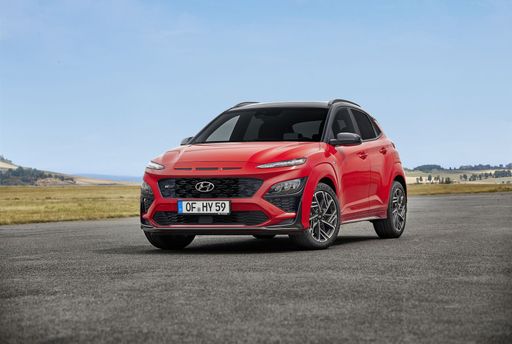 @ hyundai.news
@ hyundai.news
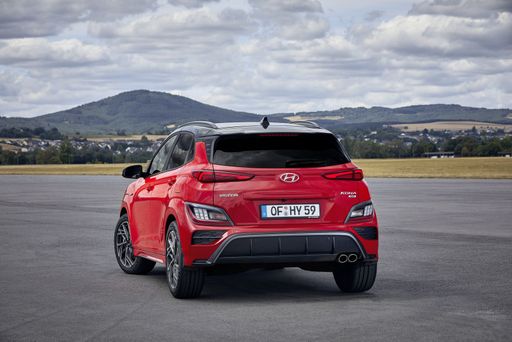 @ hyundai.news
@ hyundai.news
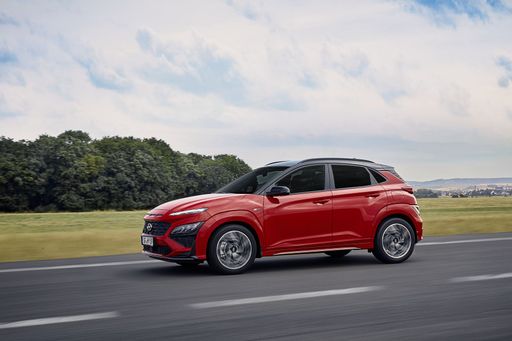 @ hyundai.news
@ hyundai.news
 @ hyundai.news
@ hyundai.news
VW Touareg
The VW Touareg stands out in the luxury SUV market with its blend of sophisticated design and advanced technology. Its interior exudes an air of refinement, featuring premium materials and state-of-the-art infotainment systems. On the road, the Touareg offers a smooth and dynamic driving experience, effortlessly combining power and precision handling.
details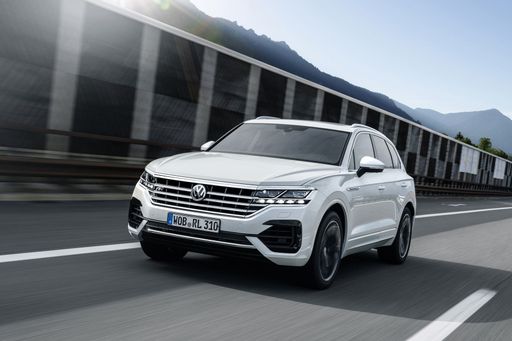 @ Volkswagen
@ Volkswagen
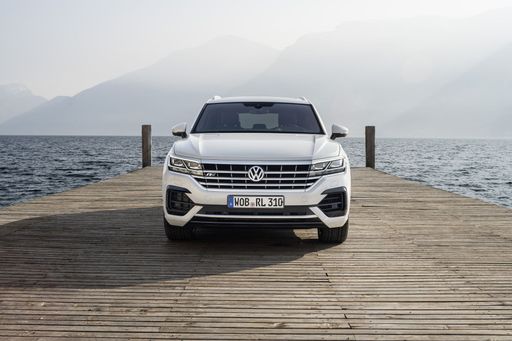 @ Volkswagen
@ Volkswagen
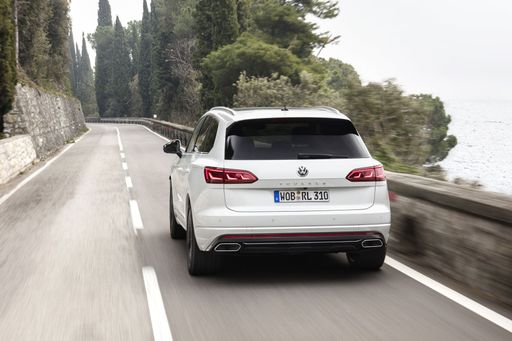 @ Volkswagen
@ Volkswagen
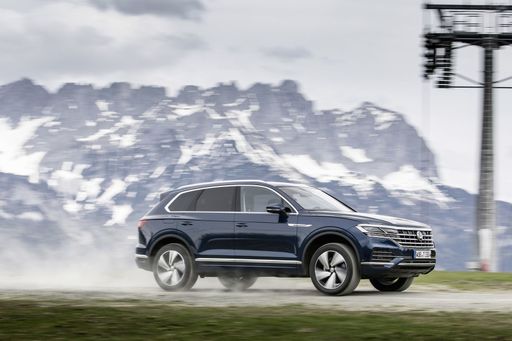 @ Volkswagen
@ Volkswagen
 @ Volkswagen
@ Volkswagen

|

|
|
|
|
Costs and Consumption |
|
|---|---|
|
Price
23100 - 41600 £
|
Price
63200 - 86000 £
|
|
Consumption L/100km
4.6 - 7 L
|
Consumption L/100km
2.2 - 10.5 L
|
|
Consumption kWh/100km
14.6 - 16.8 kWh
|
Consumption kWh/100km
-
|
|
Electric Range
377 - 514 km
|
Electric Range
48 - 51 km
|
|
Battery Capacity
1.3 - 65.4 kWh
|
Battery Capacity
14.30 kWh
|
|
co2
0 - 163 g/km
|
co2
48 - 239 g/km
|
|
Fuel tank capacity
38 - 47 L
|
Fuel tank capacity
75 L
|
Dimensions and Body |
|
|---|---|
|
Body Type
SUV
|
Body Type
SUV
|
|
Seats
5
|
Seats
5
|
|
Doors
5
|
Doors
5
|
|
Curb weight
1370 - 1773 kg
|
Curb weight
2059 - 2470 kg
|
|
Trunk capacity
466 L
|
Trunk capacity
665 - 810 L
|
|
Length
4350 - 4385 mm
|
Length
4878 - 4902 mm
|
|
Width
1825 mm
|
Width
1984 mm
|
|
Height
1580 - 1585 mm
|
Height
1693 - 1712 mm
|
|
Max trunk capacity
1300 L
|
Max trunk capacity
1675 - 1800 L
|
|
Payload
420 - 490 kg
|
Payload
550 - 751 kg
|
Engine and Performance |
|
|---|---|
|
Engine Type
Electric, Petrol, Full Hybrid
|
Engine Type
Plugin Hybrid, Petrol, Diesel
|
|
Transmission
Automatic, Manuel
|
Transmission
Automatic
|
|
Transmission Detail
Manual Gearbox, Dual-Clutch Automatic
|
Transmission Detail
Automatic Gearbox
|
|
Drive Type
Front-Wheel Drive, All-Wheel Drive
|
Drive Type
All-Wheel Drive
|
|
Power HP
115 - 218 HP
|
Power HP
231 - 462 HP
|
|
Acceleration 0-100km/h
7.8 - 11.9 s
|
Acceleration 0-100km/h
5.1 - 7.7 s
|
|
Max Speed
162 - 210 km/h
|
Max Speed
222 - 250 km/h
|
|
Torque
200 - 265 Nm
|
Torque
450 - 700 Nm
|
|
Number of Cylinders
3 - 4
|
Number of Cylinders
6
|
|
Power kW
85 - 160 kW
|
Power kW
170 - 340 kW
|
|
Engine capacity
998 - 1598 cm3
|
Engine capacity
2967 - 2995 cm3
|
General |
|
|---|---|
|
Model Year
2024 - 2025
|
Model Year
2023 - 2025
|
|
CO2 Efficiency Class
A, D, C, E, F
|
CO2 Efficiency Class
B, G
|
|
Brand
Hyundai
|
Brand
VW
|
Is the Hyundai Kona offered with different drivetrains?
Available configurations include Front-Wheel Drive or All-Wheel Drive.
The prices and data displayed are estimates based on German list prices and may vary by country. This information is not legally binding.
